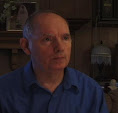By the cryptozoologist Jonathan Whitcomb
To precisely judge what might be the best Christmas (or birthday) gift for a ten-year-old girl requires knowing the interests of that child. If you'll excuse me for promoting my own book, however, please consider my new nonfiction The Girl who saw a Flying Dinosaur. It's for middle-grade children and youth up to about fourteen years old.
What's so special about this "dinosaur" book? It's nothing remotely like a fiction for preschoolers, nothing about a little boy riding on the back of a pretend dinosaur. In simple English, it gives the reader eyewitness accounts of ordinary persons who have seen what they believe are living pterosaurs. The child or teenager can decide for herself or himself what to believe. Yet a case is made that these flying creatures are indeed descended from long-tailed Rhamphorhynchoid pterosaurs.
To the best of my knowledge, no similar book has ever been published that is especially appropriate for a ten-year-old girl who reads English. It's not just that a number of the eyewitnesses in this book were girls or women but that one six-year-old girl could make such a positive impact on research that could result, at some time in the future, in one of the most exciting scientific discoveries in history.
On top of that, your purchase of this little book (56 printed pages) can help support me in my continuing research in this little-known branch of cryptozoology. The suggested retail price is only $7.80 (U.S. dollars), so why not purchase more than one? The suggested age of readers is 8-14 years.
Are these flying creature rare?
While writing this blog post, I received a sighting report from a man who is within easy driving distance of my home in Utah. These animals are uncommon but probably not very rare.
Why are they not mentioned often in newspapers? They are at least mostly nocturnal. In addition, people in Western cultures have been taught that all pterosaurs, like dinosaurs, have all become extinct, in all their countless numbers of species, many millions of years ago. That means any eyewitness in a Western country is immediately faced with a dilemma: How can they tell people about what they have seen without appearing crazy or dishonest? They need to contact someone like me, a cryptozoologist who specializes in living pterosaurs.
Contact Whitcomb
###
.
Nonfiction "dinosaur" book for children and teenagers
New book on living pterosaurs
Press release: strange flying creatures in USA
Live dinosaur
.
To precisely judge what might be the best Christmas (or birthday) gift for a ten-year-old girl requires knowing the interests of that child. If you'll excuse me for promoting my own book, however, please consider my new nonfiction The Girl who saw a Flying Dinosaur. It's for middle-grade children and youth up to about fourteen years old.
To be published early in November, 2018
What's so special about this "dinosaur" book? It's nothing remotely like a fiction for preschoolers, nothing about a little boy riding on the back of a pretend dinosaur. In simple English, it gives the reader eyewitness accounts of ordinary persons who have seen what they believe are living pterosaurs. The child or teenager can decide for herself or himself what to believe. Yet a case is made that these flying creatures are indeed descended from long-tailed Rhamphorhynchoid pterosaurs.
To the best of my knowledge, no similar book has ever been published that is especially appropriate for a ten-year-old girl who reads English. It's not just that a number of the eyewitnesses in this book were girls or women but that one six-year-old girl could make such a positive impact on research that could result, at some time in the future, in one of the most exciting scientific discoveries in history.
On top of that, your purchase of this little book (56 printed pages) can help support me in my continuing research in this little-known branch of cryptozoology. The suggested retail price is only $7.80 (U.S. dollars), so why not purchase more than one? The suggested age of readers is 8-14 years.
Are these flying creature rare?
While writing this blog post, I received a sighting report from a man who is within easy driving distance of my home in Utah. These animals are uncommon but probably not very rare.
Why are they not mentioned often in newspapers? They are at least mostly nocturnal. In addition, people in Western cultures have been taught that all pterosaurs, like dinosaurs, have all become extinct, in all their countless numbers of species, many millions of years ago. That means any eyewitness in a Western country is immediately faced with a dilemma: How can they tell people about what they have seen without appearing crazy or dishonest? They need to contact someone like me, a cryptozoologist who specializes in living pterosaurs.
Contact Whitcomb
###
.
Nonfiction "dinosaur" book for children and teenagers
Why would the new book The Girl who saw a Flying Dinosaur be the best Christmas or birthday gift for many kids and teenagers? It invites them into a new world of adventure in cryptozoology: true stories of encounters with modern living pterosaurs.
New book on living pterosaurs
An extremely important point about the sightings those children had at Guantanamo Bay is this: A few years later, the U.S. Marine Eskin C. Kuhn had a sighting of two “pterodactyls,” also at Gitmo, and within minutes of his view of them he sketched what he had seen.
Press release: strange flying creatures in USA
A nonfiction-cryptozoology author has analyzed eyewitness accounts of apparent non-extinct pterosaurs, commonly called “pterodactyls” or “flying dinosaurs,” and found that several states in the USA stand out, including Utah. Jonathan Whitcomb, of Murray, Utah, has been receiving emails since 2004, from five continents, and most of those reported sightings, in recent years, have been in North America.
Live dinosaur
Please consider the following eyewitness testimonies: many accounts of observations of a number of kinds of modern dinosaurs and pterosaurs.
.






